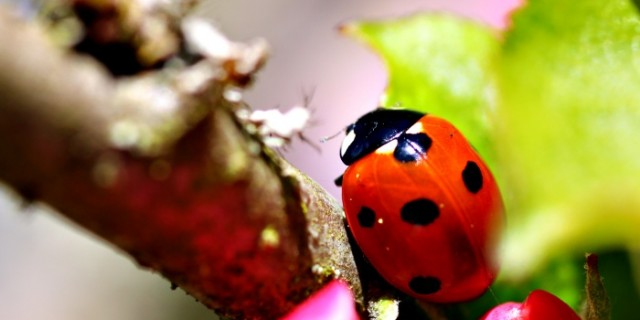
Wild Mannered: Nature TV Production
Find out what is involved in the production of Springwatch – the show that brings TV glamour to the lives of humble British birds and animals.
Words by Matthew Bell
“Bill Oddie famously said, ‘This is not a show full of lions, tigers and bears; this is robins, blue tits and blackbirds, but we love them,’” recalls Springwatch’s executive producer Tim Scoones .
Springwatch is the BBC’s voice in UK wildlife and these animals are part of our audience’s lives.
Springwatch has always embraced the latest TV technology, whether streaming video to mobile phones or shooting in high-definition. In fact, it owes its existence to the mini-camera, which allows it to get close and personal with animals in their nests.
Over the years, Springwatch has used some weird gadgets. “We put a ‘duck cam’ on a decoy duck fitted with a motor, which allowed us to get among water birds,” recalls Scoones. On a red deer rut, the team fitted cricket-type ‘stump cams’ to posts. “We called them ‘thrash cams’ because the stags, which were charged up on testosterone, sharpened their horns on them. The cameras gave us amazing shots of the stags totally beating up these posts.”
Modern high-definition mini-cams are the size of an iPhone but birds aren’t stupid – they can see cameras but as long as they don’t think it’s going to eat them they get used to them.
Some shows pay lip service to the web; not Springwatch. Wildlife enthusiasts can send pictures and home movies to the site; add to the message board; participate in scientific surveys; watch live, streamed footage of wildlife; and, of course, tweet with the twitterers. And in huge numbers – the website attracts 400,000 users every series and the Springwatch photo-sharing Flickr group is among the largest in the world. “The boundaries between the broadcasters and audience have broken down,” says Scoones.
The secret of Springwatch’s success, thinks Scoones, is its authenticity: “It shows real dramas of real animals in real time. That authenticity comes in other forms: the passion of the presenters and our relationship with our audience. We don’t contrive things; we tell it how it is.”
“Wildlife TV is a great way of instigating interest,” says Packham. “Springwatch ticks all the boxes of what I want to achieve. Hopefully we can excite people’s interest so they go out and develop a deeper affinity for wildlife. We conservationists are only small in number – we can’t do it on our own.”
Springwatch: How do they do it?
Engineering manager Ian Dewar has worked on Springwatch since the first show.
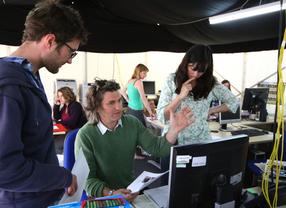
BBC Springwatch“My background is in BBC Sport outside broadcasts. We’ve borrowed that technology and transplanted it into natural history to get small cameras into nests in remote places.
“The show has grown over the years. On the first site in Devon we used 6km of armoured fibre [for the cabling]. One of the problems with optical fibres is that they attract vermin! At the new site in Wales we’re using 63km of cable. From the compound to the studio in the nature reserve is a distance of 1.5km and the furthest nests are 2.5km away. All the ground is protected – it’s a Site of Special Scientific Interest – so you can’t just dig willy nilly and I’ve got to cross a road twice and a river.
“Having spent a lifetime working in multi-camera live TV events, I’m an adrenaline junkie. When I see the red light go on, there’s nothing quite like it.”
Since 2005, remote camera operator Jo Charlesworth has operated the mini-cams that take TV audiences into the homes of the birds and animals.
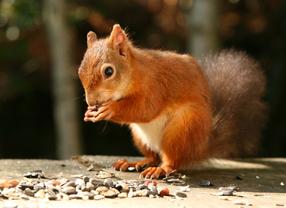
BBC Springwatch“When I started we used CCTV cameras – at the time that was about as good as quality as we could get without spending huge amounts. We filmed most of the small birds in nest boxes, which we made with holes for the cameras.
“Now, as much as possible I’m using kit brought in from specialist companies, but I really enjoyed the ‘Heath Robinson’ homemade stuff and I still do a bit. I recently bastardised some central heating timers so we could switch on infra-red lights to film birds in the dark.
“We’re using professional, broadcast-quality cameras now. When you’re looking at small birds there’s so much detail in the feathers, so you want to be able to see it as well as you can. Modern high-definition mini-cams are the size of an iPhone but birds aren’t stupid – they can see cameras but as long as they don’t think it’s going to eat them they get used to them.”
Live streaming producer Phil Windley has been bringing the intimate lives of wildlife to the web since 2007.
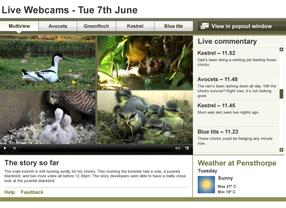 “All the feeds from the mini-cams come into an outside broadcast truck equipped with a bank of monitors. A team of story developers, working in shifts, select and record for playback in the TV programme the most exciting animal behaviour from all of the feeds coming in. They can also switch down those feeds on to the web.
“All the feeds from the mini-cams come into an outside broadcast truck equipped with a bank of monitors. A team of story developers, working in shifts, select and record for playback in the TV programme the most exciting animal behaviour from all of the feeds coming in. They can also switch down those feeds on to the web.
“The audio and video streams that the story developers decide to capture is then routed to equipment that encodes it into Adobe Flash format for the web. The data is uplinked by small satellite dishes to a satellite orbiting the Earth and then downlinked to Milton Keynes before being relayed to distribution servers and the viewing public, a round trip of approximately 77,500km.
“The cannibalistic behaviour of the barn owls who ate their little siblings at the Lost Gardens of Heligan in Cornwall was a great story that had web viewers gripped.”
The Springwatch Team
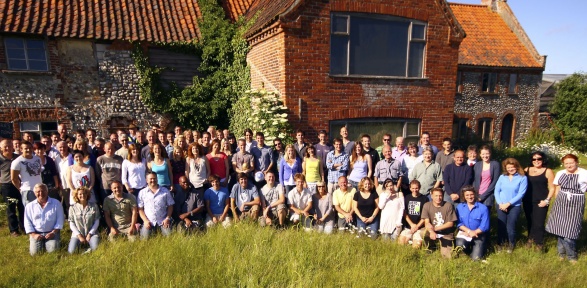
BBC Springwatch
Springwatch was awarded the BAFTA Special Award at the 2011 British Academy Television Craft Awards. Find out more about the award or read the BAFTA Spring Watch Blog from members of the team.
